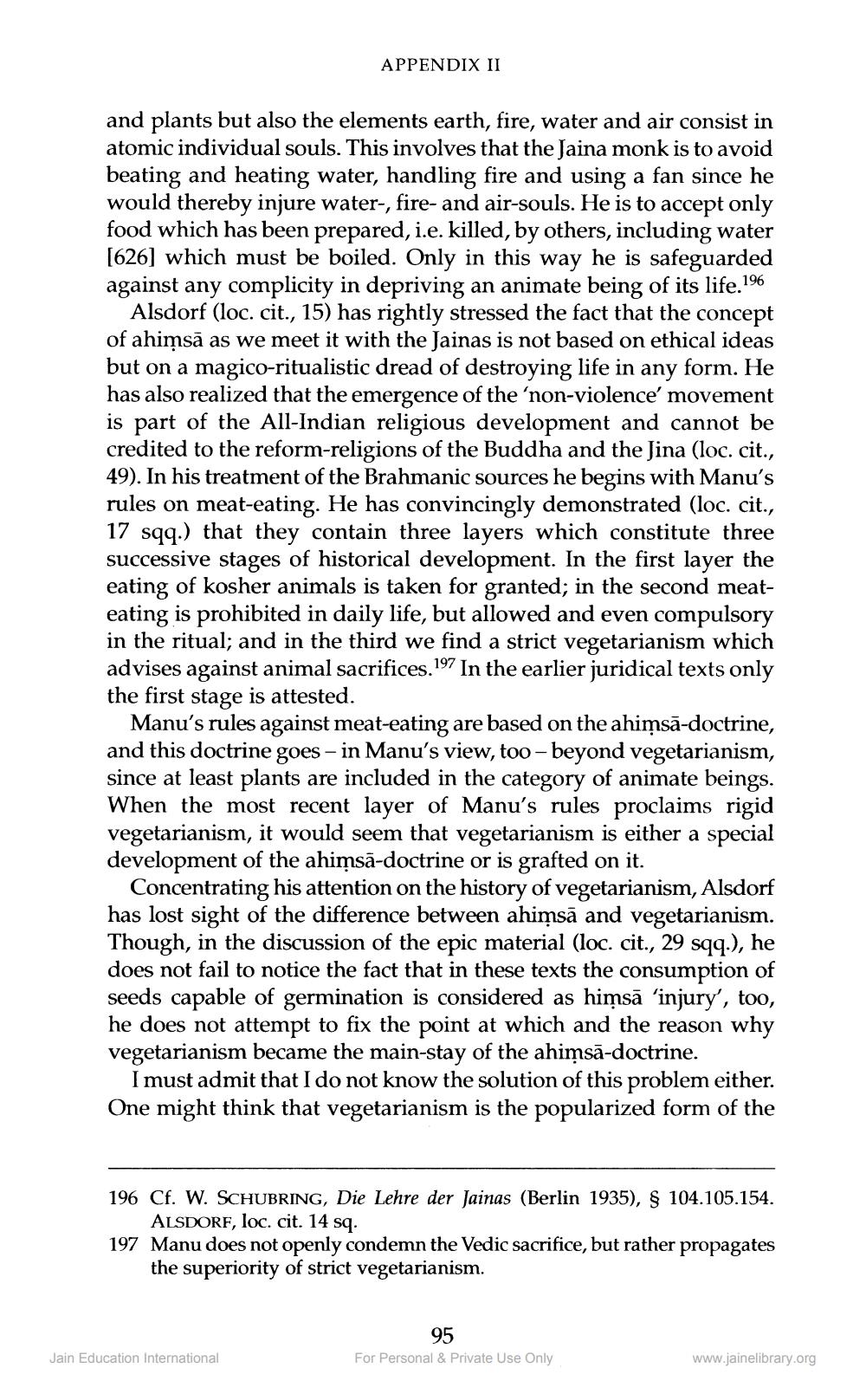________________
APPENDIX II
and plants but also the elements earth, fire, water and air consist in atomic individual souls. This involves that the Jaina monk is to avoid beating and heating water, handling fire and using a fan since he would thereby injure water-, fire- and air-souls. He is to accept only food which has been prepared, i.e. killed, by others, including water [626] which must be boiled. Only in this way he is safeguarded against any complicity in depriving an animate being of its life.196
Alsdorf (loc. cit., 15) has rightly stressed the fact that the concept of ahimsā as we meet it with the Jainas is not based on ethical ideas but on a magico-ritualistic dread of destroying life in any form. He has also realized that the emergence of the 'non-violence' movement is part of the All-Indian religious development and cannot be credited to the reform-religions of the Buddha and the Jina (loc. cit., 49). In his treatment of the Brahmanic sources he begins with Manu's rules on meat-eating. He has convincingly demonstrated (loc. cit., 17 sqq.) that they contain three layers which constitute three successive stages of historical development. In the first layer the eating of kosher animals is taken for granted; in the second meateating is prohibited in daily life, but allowed and even compulsory in the ritual; and in the third we find a strict vegetarianism which advises against animal sacrifices. 197 In the earlier juridical texts only the first stage is attested.
Manu's rules against meat-eating are based on the ahimsa-doctrine, and this doctrine goes - in Manu's view, too - beyond vegetarianism, since at least plants are included in the category of animate beings. When the most recent layer of Manu's rules proclaims rigid vegetarianism, it would seem that vegetarianism is either a special development of the ahimsa-doctrine or is grafted on it.
Concentrating his attention on the history of vegetarianism, Alsdorf has lost sight of the difference between ahimsā and vegetarianism. Though, in the discussion of the epic material (loc. cit., 29 sqq.), he does not fail to notice the fact that in these texts the consumption of seeds capable of germination is considered as himsā 'injury', too, he does not attempt to fix the point at which and the reason why vegetarianism became the main-stay of the ahimsā-doctrine.
I must admit that I do not know the solution of this problem either. One might think that vegetarianism is the popularized form of the
196 Cf. W. SCHUBRING, Die Lehre der Jainas (Berlin 1935), S 104.105.154.
ALSDORF, loc. cit. 14 sq. 197 Manu does not openly condemn the Vedic sacrifice, but rather propagates
the superiority of strict vegetarianism.
95 For Personal & Private Use Only
Jain Education International
www.jainelibrary.org




